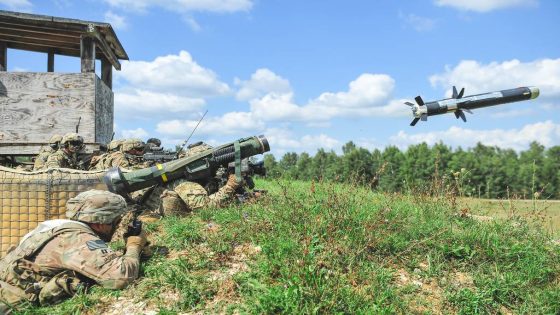TAMPA, Fla. â Special operators are pushing for more firepower in their small teams, asking industry for a lighter shoulder-fired rocket, a long-range sniper rifle, and both land- and air-based weaponized drones.
Lt. Col. Tosh Lancaster told the audience at the Special Operations Force Week conference that U.S. Special Operations Command plans to publish a request for information covering a âJavelin lightâ by late fiscal 2024 or early fiscal 2025.
The program for a tactical precision missile would give small teams of special operators the capabilities of the current shoulder-fired, anti-tank Javelin rocket but in a smaller package.
The Javelin is a 127mm caliber rocket made by Lockheed Martin thatâs been in operation since the 1990s. The weapon has been used extensively by Ukrainian fighters in the ongoing war with Russia. It can strike targets at a distance of 65 meters to 4,000 meters, depending on operational conditions, the company has said.
Defense contractors Lockheed Martin and RTX are working together on a Javelin modernization program that will lighten the systemsâ command unit and upgrade its missile, according to a 2023 Pentagon test report.
The updated version is expected to field in 2025, Breaking Defense reported.
Special operators are also seeking a so-called Extreme Long Range Sniper Rifle that could also strike targets at 2,500 meters or beyond, Lancaster said. The project, first announced in December, would replace the existing M107 and Mk15 sniper rifles, which have effective ranges of 2,000 meters and 1,800 meters, respectively.
Both rifles are chambered in .50 caliber, but the new one could be the same caliber or a different round, Lancaster said.
âWe are opening it up, seeing what else is out there. And even if that is just [an] improvement of our current .50-[caliber] system, thatâs fine too,â Lancaster said.
For even more punch and options, the command has expanded its ongoing effort to arm its teams with their own loitering munitions by adding ground robotics to the mix of lethal options.
Lancaster said that program for precision strike systems is now working toward whatâs described as unmanned precision effects. Thatâs a nod to options for operators to use conventional strike or other assets such as electromagnetic attack tools.
Ideally, Lancaster said, the solution for this capability runs on an aerial drone or a man-portable ground robot and has âbolt-onâ lethality, meaning operators can attach or install a variety of weapons or sensors to either the ground or aerial system.
Todd South has written about crime, courts, government and the military for multiple publications since 2004 and was named a 2014 Pulitzer finalist for a co-written project on witness intimidation. Todd is a Marine veteran of the Iraq War.
Source Agencies




